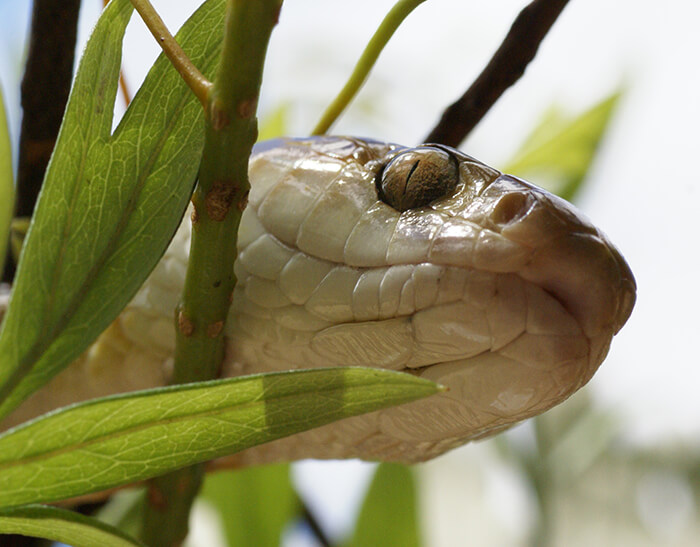Introduction
Tiger serpents (Notechis scutatus) are among one of the most interesting yet been afraid reptiles discovered in Australia. With their striking look and potent poison, these snakes evoke a mix of wonder and care. Observing tiger serpents in their natural environment can be a thrilling experience for nature enthusiasts, wild animals photographers, and researchers alike. However, it's crucial to approach this venture with regard for the animal's habitat and an understanding of precaution to prevent serpent bites.
In this detailed guide, we'll check out how to safely observe tiger snakes in their all-natural habitat. We will certainly cover topics varying from recognizing their actions and environments to first aid for snake bites-- are golden crowned snakes venomous furnishing you with knowledge to improve your experience while decreasing risks.
What is a Tiger Snake?
Tiger snakes are highly poisonous snakes belonging to Australia, specifically Tasmania and coastal regions. They are understood for their distinctive banded coloration appearing like a Safety and Prevention tiger's stripes, which can vary from yellowish-brown to dark brown or even black.
Physical Characteristics
Tiger serpents are tool to large-sized serpents that can mature to 2 meters long. Their bodies are robust, and they have a wide head that is distinctly wider than their necks.
Habitat Preferences of Tiger Snakes
These reptiles usually occupy marshes, estuaries, and coastal regions yet can also be found near freshwater resources like rivers and lakes. Recognizing where these serpents live is vital for any person seeking to observe them safely.
Understanding Tiger Serpent Behavior
Are Tiger Snakes Venomous?
Yes, tiger serpents are amongst the most poisonous snake types internationally. Their venom consists of neurotoxins that can cause major medical difficulties if bitten.

Behavioral Traits
Tiger serpents are typically timid creatures; they choose to prevent human interaction. Nevertheless, they can end up being hostile if endangered or cornered.
Where Can You Find Tiger Snakes?
Tiger Snake Environment Exploration
To securely observe tiger snakes in their natural habitat, it's necessary initially to recognize where they flourish. They often tend to prefer:
- Coastal marshlands Mangroves Swamps Riverbanks
Best Places for Observation
Some advised places include:
- Tasmanian wetlands The coastlines of southern Australia National parks with water bodies
Safety Precautions Before Observing Tiger Snakes
Understanding the Dangers of a Tiger Serpent Bite
Although encounters with tiger snakes can be awesome, being aware of the risks included is paramount:
Recognize signs and symptoms of a serpent bite: swelling at the site, pain radiating from the bite area. Know emergency get in touches with: Acquaint on your own with regional emergency situation services. Carry a first-aid package specifically furnished for snake bites.First Aid for Serpent Bites: What You Required to Know
Knowing what actions to take if bitten could save your life or another person's:
- Stay calmness; motion boosts venom spread. Call for clinical help immediately. Do not apply ice or attempt suctioning.
How to Safely Observe Tiger Snakes in Their All-natural Habitat
When you decide to observe tiger serpents in the wild:
Dress Appropriately: Put on long pants and tough boots. Use Binoculars: Keep a secure distance while observing these reptiles. Avoid Abrupt Movements: Quick activities may stun them. Stay on Developed Trails: Avoid roaming into dense underbrush where exposure is low.Equipment Needed for Observation
Essential Equipment Checklist
- Binoculars First-aid set specifically made for serpent bites Field guidebook on Australian reptiles Camera (with zoom capacity)
Snake Bite First Aid Package Essentials
A well-equipped first aid set need to consist of:|Thing|Function|| -------------------------------|-------------------------------|| Compression bandage|To paralyze the affected location|| Antihistamines|For allergies|| Emergency get in touch with numbers|Quick accessibility during emergencies|
Interpreting Tiger Snake Signals
Understanding how tiger snakes connect with body movement assists onlookers evaluate when it's safe or risky:
Common Behaviors
Defensive pose: If coiled or raised off the ground. Retreating behavior: When they gradually retreat from potential threats.Dealing With Potential Encounters
Even with preventative measures taken, an experience may still take place throughout your monitoring trip:
Remain calm; stressing only increases risks. Slowly pull back without turning your back on the snake. Make your visibility known vocally yet avoid unexpected movements.Frequently Asked Inquiries About Tiger Snakes
1. What ought to I do if I see a tiger snake?
Remain calmness; observe from a range without troubling it.
2. Are baby tiger snakes dangerous?
Yes, adolescent tiger serpents are born venomous and might position threats similar to grownups regardless of being smaller.
3. How common are tiger snake bites?
While cases occur every year in Australia, casualties are unusual due to timely treatment availability.

4. Can I keep a tiger snake as a pet?
Keeping wild tiger snakes the most venomous snake in australia as animals is unlawful in lots of regions due to preservation laws.
5. What does a tiger snake attack look like?
Bite marks generally show 2 puncture wounds along with localized swelling and discoloration.
6. Just how efficient is antivenom?
Antivenom therapy is extremely reliable when provided prompt after a bite.
Conclusion
Observing tiger snakes in their all-natural environment supplies an exciting opportunity for wild animals fans however must be approached with care and respect for both the animal and its atmosphere. By arming on your own with understanding about these fascinating reptiles-- consisting of comprehending their habits and precaution-- you can enjoy memorable experiences while considerably lowering dangers related to encounters.
In summary, constantly focus on safety by preparing properly prior to embarking on any wild animals monitoring expedition-- particularly when handling some of nature's most poisonous creatures like the tiger snake!
